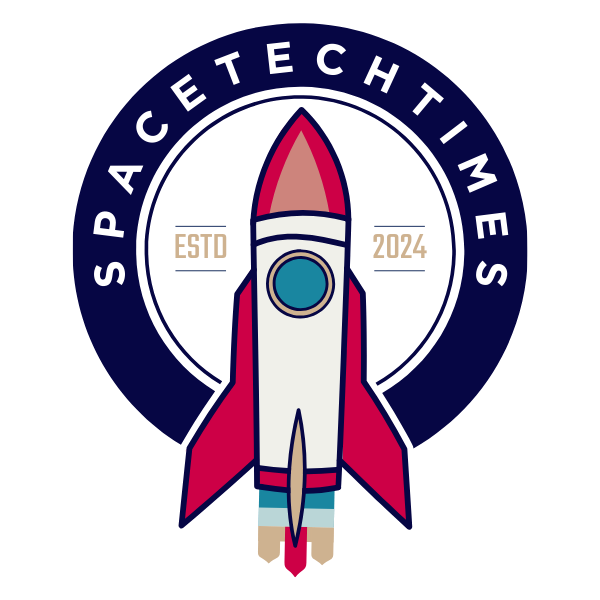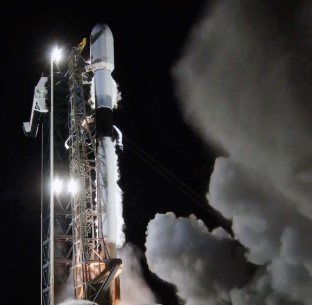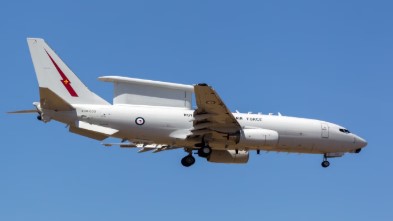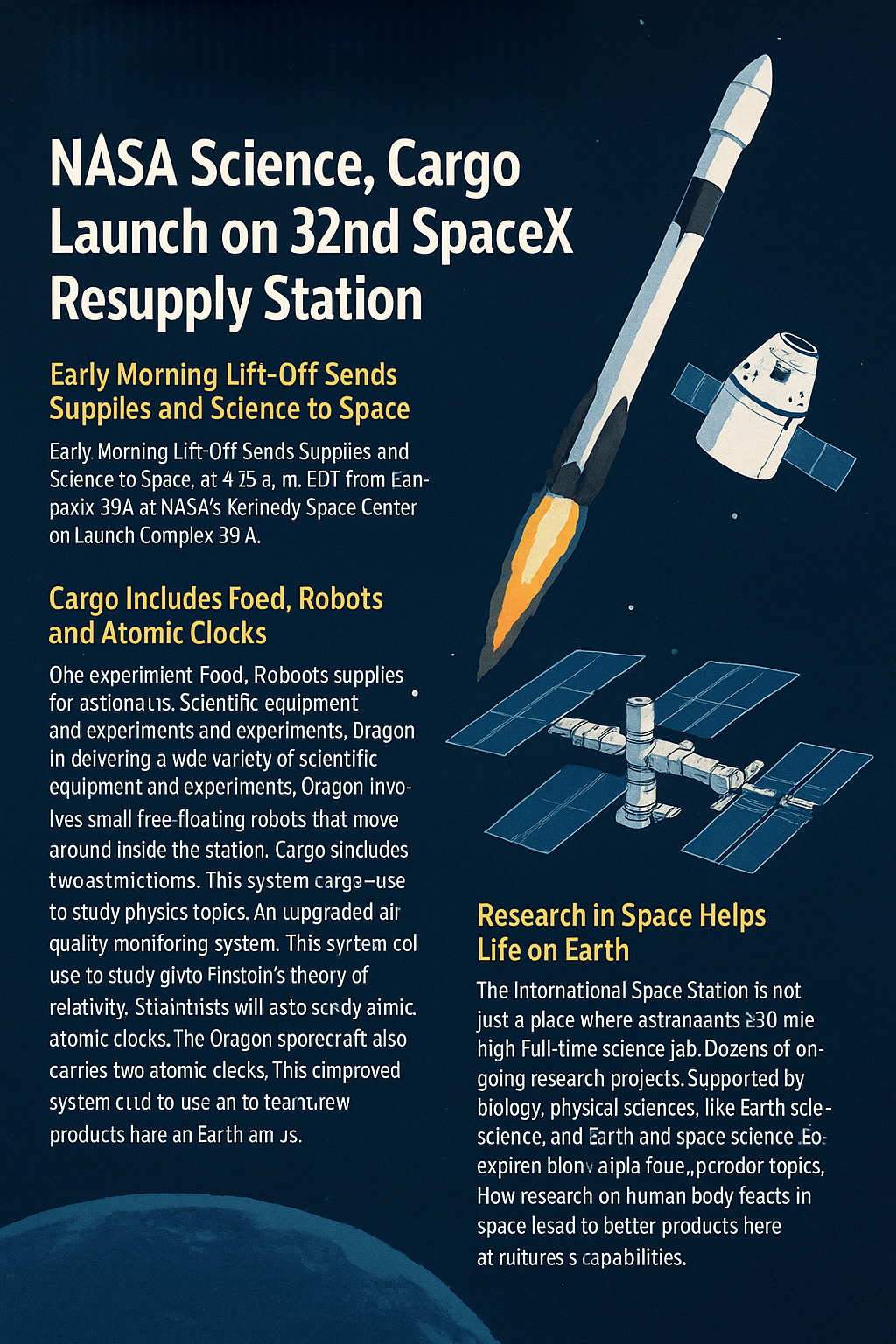On April 21, 2025, people living near Florida’s Space Coast heard something exciting not once, but twice—a loud “boom” in the sky. These sounds came from two separate rocket launches by SpaceX, the space company led by Elon Musk. The second sonic boom of the day happened in the evening after a Falcon 9 rocket returned safely to Earth. This rocket had just finished its job of launching the Bandwagon-3 rideshare mission.
Two Sonic Booms, One Big Day for SpaceX
The liftoff took place at 8:48 p.m. from Space Launch Complex 40 at Cape Canaveral Space Force Station. It was the second Falcon 9 launch of the day. Earlier that morning, SpaceX had launched another Falcon 9 carrying supplies to the International Space Station under the CRS-32 mission. Launching two rockets within one day shows how quickly and efficiently SpaceX is now able to send things into space.
The return of the Bandwagon-3 rocket was marked by a loud sonic boom, which happens when the rocket reenters Earth’s atmosphere and lands back safely. This sound could be heard across parts of Florida, giving residents a clear sign that the rocket had landed at Landing Zone 2 without any issues. The booster used for this mission had flown twice before, including missions for NASA and SES, proving how reusable and reliable these rockets are.
What Was on the Bandwagon-3 Rocket?
The Bandwagon-3 mission was not just about launching a rocket. It was about carrying important cargo for different customers. This was SpaceX’s third “rideshare” mission, which means multiple groups shared the ride to space to save money. Instead of paying for the entire rocket, smaller organizations can send their satellites or capsules together on one trip.
This time, there were three main payloads on board:
- 425Sat-3: This small satellite was built by South Korea’s Agency for Defense Development (ADD). It’s part of the country’s larger 425 Project, which focuses on improving military surveillance from space. This satellite helps South Korea keep an eye on what’s happening around its region from above.
- Tomorrow-S7: This satellite was developed by a company called Tomorrow Companies Inc. It is part of their plan to launch a whole group of satellites to improve how we understand and predict weather. These satellites will use artificial intelligence (AI) and data to make weather forecasts better and more helpful to people all around the world. The exact details of this particular mission are still being kept private, according to Fox 35 Orlando.
- Phoenix 1 Reentry Capsule: This is a very special item. It was built by a German company called Atmos Space Cargo. Phoenix 1 is the first reentry capsule ever made and launched by a European company. After being in space for just one orbit around Earth, Phoenix 1 is expected to land in the Atlantic Ocean, about 1,200 miles off the coast of Brazil. The capsule will test a new type of technology called an “inflatable atmospheric decelerator.” This device helps slow down the capsule as it falls back to Earth. According to Space.com, Atmos Space Cargo believes this is an important step toward changing how space cargo is handled and bringing items safely back from space.
Each of these missions had a unique purpose. Together, they show how the Bandwagon series is giving more organizations the chance to reach space without needing to buy a whole rocket themselves.
SpaceX’s Growing Rideshare Program
The Bandwagon-3 mission is part of a larger trend at SpaceX. The company has been working to make space more accessible for everyone. Instead of large companies or governments being the only ones able to send items into orbit, now smaller companies, research groups, and even schools can get involved.
SpaceX started offering rideshare missions in 2021 with the Transporter program. That program still holds the record for launching the most satellites in one go—143 small satellites on a single flight. Since then, SpaceX has added the Bandwagon series, which began in April 2024. These launches are designed to serve even more customers with different needs.
So far, SpaceX has sent more than 1,130 small satellites into orbit for around 130 different customers using its rideshare service. These clients come from all over the world and include governments, private companies, and scientific institutions. The Bandwagon-3 mission is just one example of how SpaceX is helping to grow this new era of shared space travel.
After the successful Bandwagon-3 mission, the first-stage booster from the Falcon 9 landed safely back at Cape Canaveral. It had flown twice before and was used again for this mission, showing how reusable rockets help save time and money.
The next rocket launch by SpaceX from Cape Canaveral is expected no earlier than April 24, carrying more Starlink internet satellites into orbit. Another major space company, United Launch Alliance, is also planning to launch its Amazon Kuiper mission from the same area no earlier than April 28.
These rapid launches, including missions like Bandwagon, show how busy and active the space industry has become, especially along Florida’s Space Coast. And with rockets landing back safely and new missions taking off almost every week, it’s clear that space travel is becoming faster, more regular, and more accessible than ever before.




